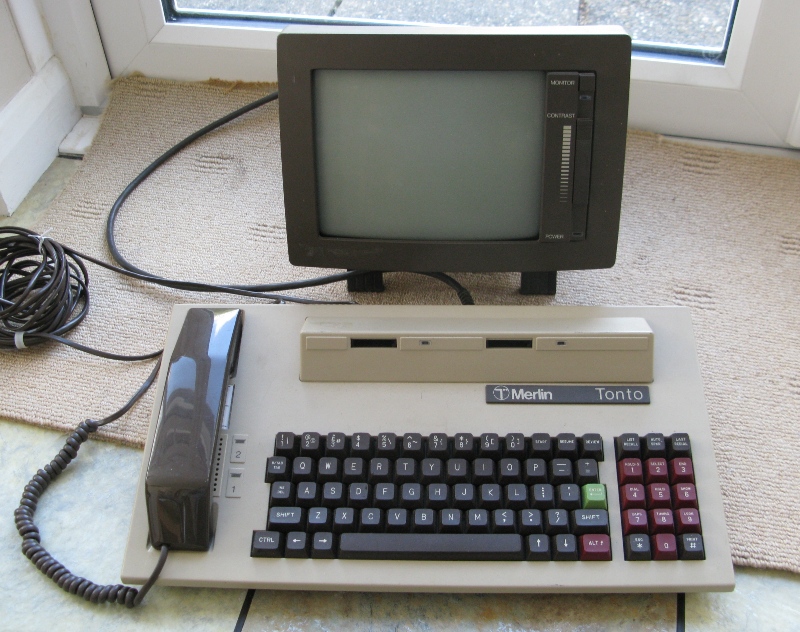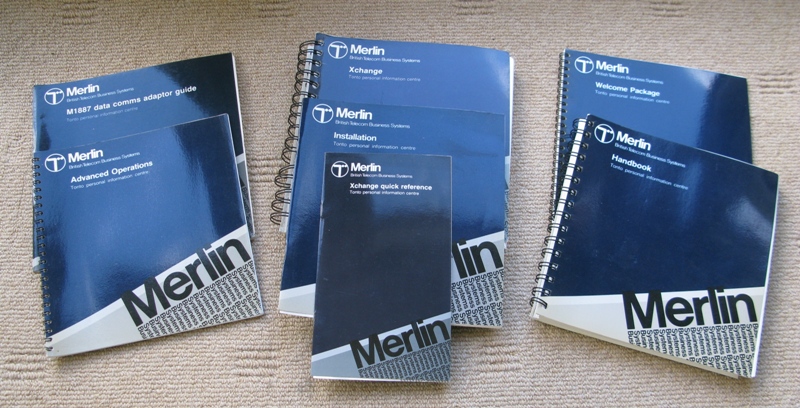1980s Vintage Computers
Merlin Tonto

The Merlin Tonto (a BT version of the ICL One-Per-Desk or OPD) came out in 1984 as an integrated computer, telephone and electronic communications system. It was hampered by the use of Sinclair Microdrives (albeit modified by ICL) which proved to be unreliable and incompatible with any other computer, including the Sinclair QL which it was developed from. The system pictured has:
- Integrated 9" monochrome (black and white) graphics display.
- Two Microdrive for tape storage, 100KB each for software or data.
- Motorola 68008 32-bit processor running at 8MHz.
- 128kB RAM, 128kB ROM for OS and 160kB ROM pack for XChange.
- Small 2kB of battery backed RAM and a real-time clock.
- Slots for two ROMs (known as capsules, 32kB each) for additional software.
- Telephone with two lines, one of which has a low-speed modem (1200/75 or 300 baud).
- Built in speech synthesizer for auto-answer.
- Reasonable quality keyboard.
- Printer socket.
The Tonto was also available with a larger colour display, limited to 4 colours at once.
The XChange software was produced by Psion and was quite advanced, offering integrated word processing, graphics, spreadsheet and basic card-index style database. The base Tonto included a modem for dial-up access to remote computers or to the Prestel system. The software included a telephone directory for storing names, numbers, and addresses. An optional Messaging capsule was available to allow text messages to be sent to other Tontos, which was also compatible with the Merlin M2105 messaging terminal (both used the T-Link protocol). Basic was loaded from a supplied Microdrive cartridge, unfortunately my Tonto's drives are not working.
The Tonto was not a great seller, but had some keen users, and spawned an add-on market (as for the Sinclair QL) such as for floppy disk drives.
The Merlin Tonto came with a clear set of manuals:

My Tonto needed a few new electroylic capacitors to get working, these were in the PSU and monitor. I used an LCR meter to find the ones which had failed, then soldered in replacements. I didn't try and repair the Microdrives, I'll leave those to the next owner.
This page was last revised on:8/5/21